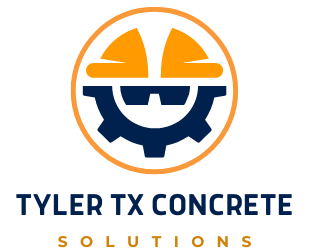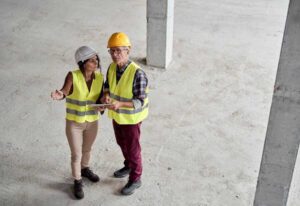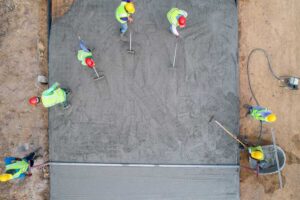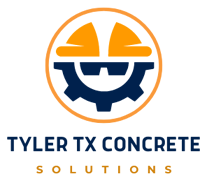In the world of construction, safety is paramount. From towering skyscrapers to residential homes, every job site demands a commitment to ensuring the well-being of workers and the public. Concrete contractors, in particular, play a crucial role in this landscape, as their work forms the foundation of countless structures. In our blog post, “Safety First: Ensuring a Secure Job Site with Concrete Contractors,” we delve into the vital importance of prioritizing safety measures in concrete construction projects. We’ll explore the risks inherent in working with concrete, the specific safety protocols that concrete contractors must adhere to, and innovative strategies for mitigating potential hazards. Whether you’re a construction professional, project manager, or simply someone interested in the intricacies of building safety, this article will provide valuable insights into how concrete contractors uphold the highest standards of safety on job sites. Join us as we delve into the world of secure construction practices and the pivotal role of concrete contractors in maintaining them.
Top Safety Practices for Concrete Construction Sites
Concrete construction sites can be hazardous environments, with various risks ranging from falls and struck-by accidents to exposure to hazardous materials. Implementing top safety practices is crucial to ensuring the well-being of workers and maintaining a secure job site. In this article, we’ll explore some of the essential safety practices that concrete contractors should prioritize.

- Conduct Regular Safety Inspections:
Regular safety inspections are fundamental to identifying and addressing potential hazards on concrete construction sites. These inspections should encompass everything from equipment integrity to the condition of scaffolding and formwork. By proactively identifying risks, contractors can take corrective action before accidents occur.
- Provide Adequate Training: Proper training is essential for all workers involved in concrete construction. This includes training on equipment operation, hazard recognition, and emergency procedures. Workers should understand how to safely handle concrete mixtures, operate machinery such as concrete pumps and mixers, and use personal protective equipment (PPE) correctly.
- Use Personal Protective Equipment (PPE): Personal protective equipment is a vital line of defense against workplace injuries. Concrete contractors should ensure that all workers have access to and wear the appropriate PPE for their tasks. This may include hard hats, safety goggles, gloves, steel-toed boots, and respiratory protection when working with concrete dust or other airborne contaminants.
- Implement Fall Protection Measures: Falls are a leading cause of injuries on construction sites, including those involving concrete work. To mitigate this risk, contractors should implement fall protection measures such as guardrails, safety nets, and personal fall arrest systems (PFAS) when working at heights. Workers should also be trained on proper ladder safety and scaffold use.
- Establish Clear Communication Channels: Effective communication is critical for maintaining safety on concrete construction sites. Contractors should establish clear communication channels among workers, subcontractors, and supervisors to ensure that everyone is aware of potential hazards and can communicate effectively in case of emergencies.
The Role of Communication in Maintaining Safety on Concrete Job Sites
In the dynamic environment of concrete job sites, where heavy machinery, complex processes, and multiple workers operate simultaneously, effective communication plays a pivotal role in ensuring safety. From preventing accidents to streamlining workflows, clear and consistent communication among team members, subcontractors, and supervisors is paramount.
Establishing Clear Lines of Communication
The foundation of a safe work environment begins with establishing clear lines of communication. This involves implementing communication channels that allow workers to easily convey important information, such as safety concerns, changes in work plans, or emergency situations. Whether through regular meetings, digital communication platforms, or designated safety officers, ensuring that every member of the team knows how to communicate effectively is crucial.
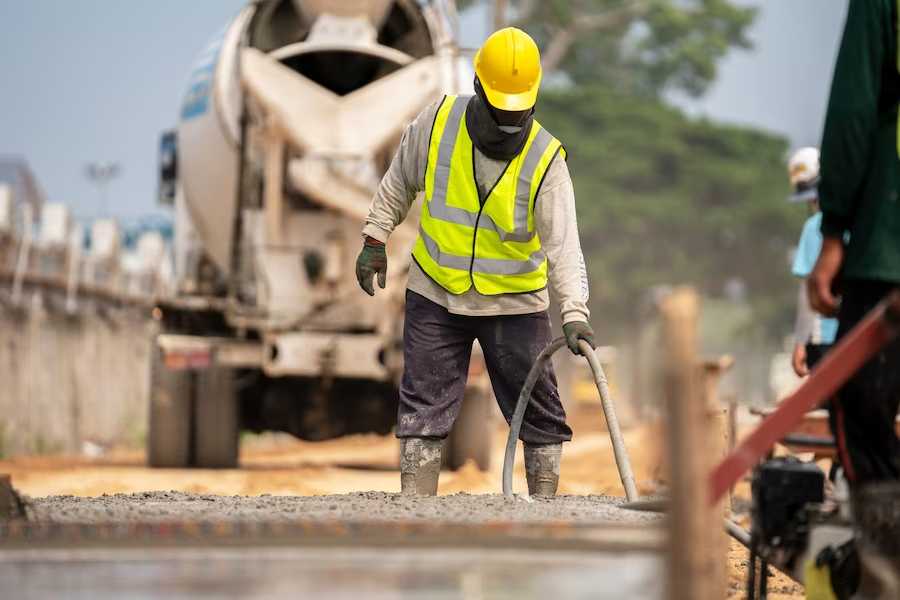
The Path to Sustained Safety Excellence
In the realm of concrete contracting, safety is not just a goal but a journey—an ongoing commitment to fostering a work environment where every worker returns home safely at the end of the day. Achieving and sustaining safety excellence requires more than just implementing standard protocols; it demands a culture of continuous improvement, where each day presents an opportunity to enhance safety practices and procedures. In this blog post, we explore how embracing the philosophy of continuous improvement paves the way to sustained safety excellence on concrete job sites.
- Understanding Continuous Improvement: At its core, continuous improvement is about making incremental advancements over time. It involves regularly evaluating current practices, identifying areas for enhancement, and implementing changes to drive improvement. In the context of safety, this means constantly seeking ways to enhance existing safety protocols and procedures to better protect workers from harm.
- Establishing a Feedback Loop: One of the cornerstones of continuous improvement in safety is establishing a robust feedback loop. This involves encouraging open communication among workers, supervisors, and safety officers to report near misses, identify potential hazards, and suggest improvements to existing safety measures. By actively soliciting feedback from those on the front lines, concrete contractors can gain valuable insights into areas where safety practices can be strengthened.
- Conducting Regular Safety Audits: Regular safety audits are essential for identifying areas of improvement and ensuring compliance with safety regulations. These audits involve comprehensive inspections of the job site, equipment, and work practices to assess adherence to safety protocols and identify any deficiencies. By conducting these audits on a consistent basis, concrete contractors can proactively address safety concerns and prevent accidents before they occur.
- Investing in Ongoing Training: Safety training shouldn’t be a one-time event but an ongoing process. Providing regular training sessions ensures that workers are equipped with the knowledge and skills necessary to perform their jobs safely. Additionally, training should evolve to address emerging safety concerns and new technologies, keeping workers informed of the latest best practices and innovations in safety management.
- Embracing Technology: Technology plays a crucial role in driving continuous improvement in safety. From advanced monitoring systems that track worker movements and detect potential hazards to virtual reality simulations that provide immersive safety training experiences, embracing technology can enhance safety practices and promote a culture of innovation within concrete contracting companies.
Conclusion
Tyler TX Concrete Solutions, we prioritize safety above all else to ensure a secure job site for both our team members and clients. By adhering to stringent safety protocols and regulations, we uphold our commitment to excellence in every project we undertake. With a dedicated focus on maintaining the highest standards of safety, we strive to foster a work environment that promotes productivity, efficiency, and peace of mind for everyone involved. Contact us at +1 903 730 6229 to experience firsthand how our unwavering dedication to safety sets us apart in delivering top-tier concrete contracting services in Tyler, Texas, and beyond.
